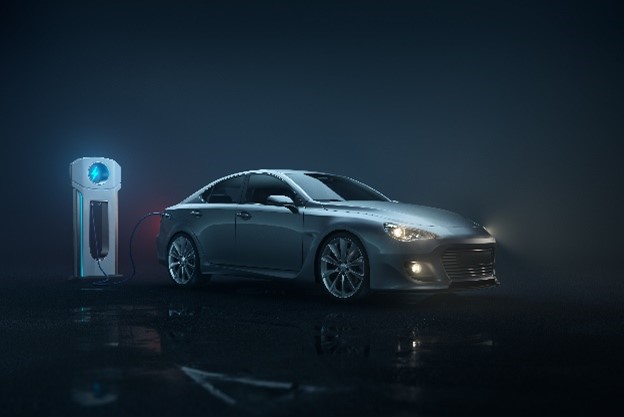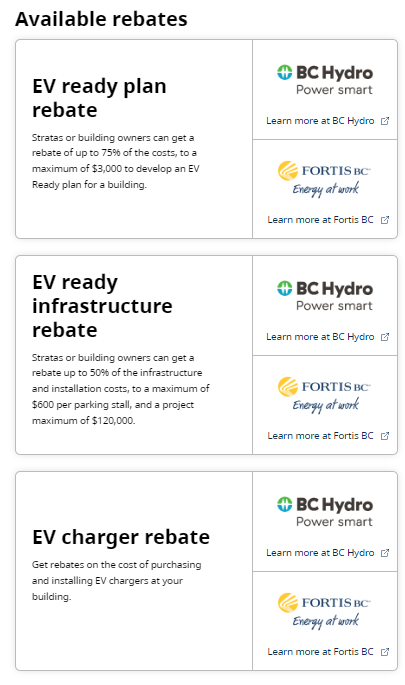Where does one charge their electric vehicle? Is it at work, at public chargers, at the EV station the traditional gas station has installed? Or is it at home?
The general consensus is that the ideal scenario to facilitate day-to-day driving is that the charging infrastructure would be at home. For longer road trips or heavy-use days, a stop at a DC fast charger would be required. Many people live in single detached homes, however, a growing number of people live in multi-unit residential buildings (MURBs). Let us review the different scenarios (owned vs rental units) and also discuss new construction versus existing buildings.
What Types of Systems Work?
Electric vehicle supply equipment (EVSE) comes in several different sizes (refer to Electrical Vehicle Charging – Part I: The Basics). In a residential environment, Level 2 (AC chargers) of approximately 7.2 KW maximum capacity is the most common EVSE installed. When evaluating average vehicle requirements, one needs to estimate daily driving habits, vehicle efficiency and battery size. The average individual in British Columbia commutes less than 50 km per day. Assuming a vehicle efficiency of approximately 200Wh/km, the daily charging needs of the vehicle would be 10 KWh. With the introduction of trucks and SUVs to the market, the average vehicle efficiency will decrease and the daily charging needs will go up. As an example, let’s use 15KWh daily use. Overnight, vehicles are typically parked for 12 hours. So:
15 KWh ÷ 12 hrs = 1.5 KW
The hourly requirement for charging of only 1.5 KW demonstrates that a Level 1 (standard receptacle) would be enough in most cases. The ability to charge at a higher rate is beneficial when required and Level 2 EVSEs are the expectation both from homeowners and from municipality bylaws (where applicable).
The electrical code requires all EVSE to be taken as a continuous load. This means that unless specific management systems are installed, the total load of EVSE on the electrical system can increase quickly. For a typical 48-unit MURB, if we were to allow for a 7.2 KW EVSE for each unit, it would nearly double the size of incoming electrical service to the building.
Pros and Cons of Suite Fed EVSE and Energy Management System (EMS)
Suite Fed EVSE
For a smaller building where the unit panels are relatively close to the parking stalls, feeding the EVSE directly from the suite panel simplifies installation and billing.

Energy Management System (EMS)
A centrally controlled system that monitors both EV panel and main distribution center capacity and delivers maximum available power to the charging stations. This allows for the building design to incorporate a fixed electrical capacity and distribute it evenly to the charging stations. The power delivered to each charging station depends on how many vehicles are plugged in and require a charge.

I am a Developer – What should I install in my new building?
Municipalities in BC are increasingly adopting specific EV infrastructure Bylaws. The bylaw represents the minimum requirement for any new construction and typically requires at least the rough-in for a charging station at one parking stall per residential unit. Early in the design process of a new building, it is imperative that the bylaw requirements are reviewed and the proper considerations are made regarding the electrical service size and the distribution method.
Market Condominiums – The expectation for new buyers is that there is either infrastructure at the parking stall, or the building is adequately set up to accommodate the addition of EV chargers when required. For small buildings, the suite-fed EVSE option should be considered. For larger buildings (typically more than 20 units), if the intent is to provide an EVSE to each parking stall, the best option is likely an energy-managed system. Consideration for individual owners’ EVSE equipment choices should be made. How integrate different chargers into the distribution system may be difficult.
Rental Apartments – Expectations are not where renters are banking on access to EVSEs, however, it is currently seen as a marketable feature. Since the renter turnover might be more frequent, it is beneficial to have everything installed and controlled by the property manager. If the intent is to install only a couple of units, then it is possible to feed the EVSEs from an EV panel, as the total load would not be a concern to the building distribution system. Property managers have the ability to re-assign parking stalls (not able to with condos) and there is the possibility to simply add a flat rate to the rental cost for the use of the EVSE. If done properly, this system can be expanded in the future to develop into a full EMS. If the intent right away is to install a large number of EVSEs (or maybe a full build-out), then a complete EMS should be considered..

I am a Property Manager/Strata Member – What should I install in my existing building?
Currently both BC Hydro and FortisBC are working in conjunction with CleanBC to provide incentives for existing buildings to install EV charging infrastructure. The program supports both the engineering costs for an EV Ready Plan report as well as incentives for the installation of conduit, wire and energy management equipment.
The process begins with an evaluation of the building’s electrical infrastructure, as well as historical utility invoices, to determine the capacity of the building and the feasibility of getting the feeders to the required locations. The plan also provides a design that an electrical contractor can use to provide a quote for the required work.
The CleanBC incentives require at minimum that conduit and wire be installed to at least one parking stall per residential unit. The head end management system equipment also needs to be installed, leaving only the final EVSE to be installed when required.
Due to the high likelihood of the building having limited capacity for electric vehicle charging, the installation of an energy management system is in most cases going to be the best solution.
Interested In Installing EV Chargers?
Interested in installing EV chargers in your existing building? Or are you a developer looking to include EV chargers in your design? Then get in contact with our Electrical Engineering team and they can answer all your questions.
Need to learn more about our engineering services? Visit our integrated engineering services page.
Want to learn more about electrical engineering? Check out some of our other blogs!
